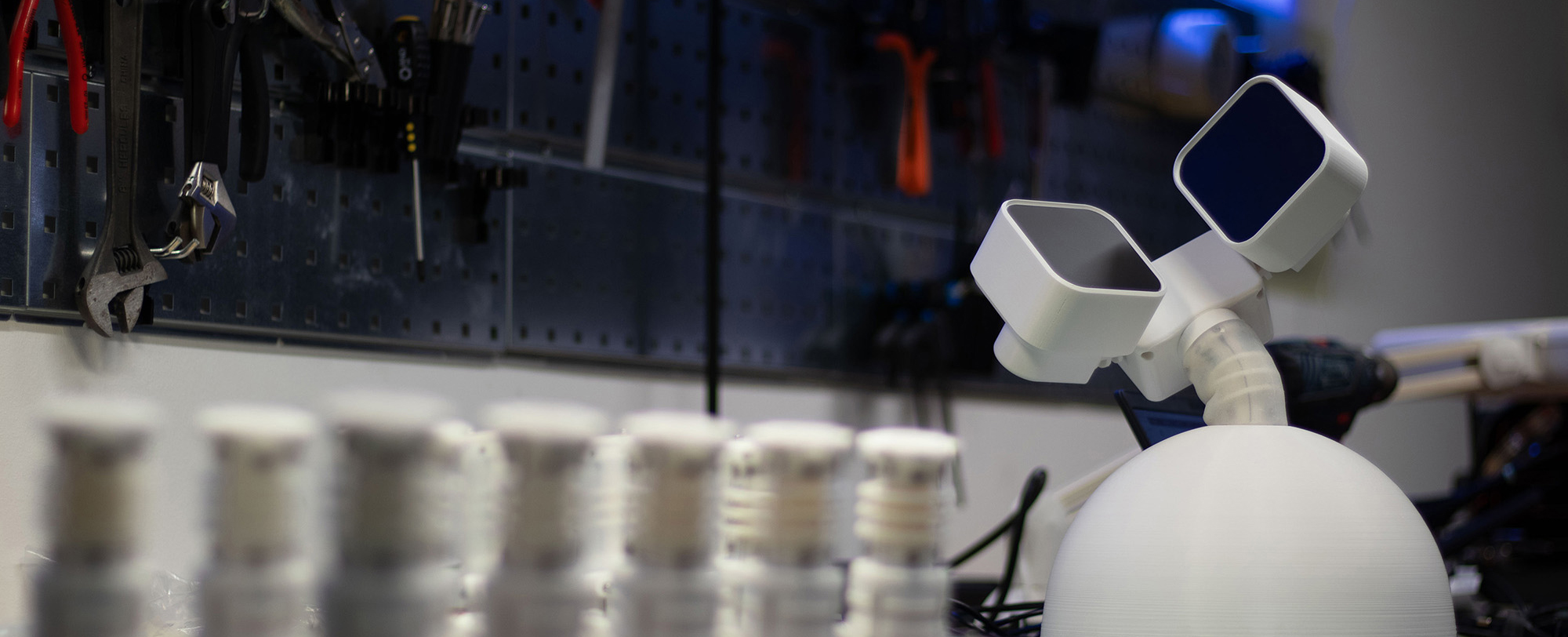
HARU: On the compliance, reliability and motion control of a tabletop robot
HARU is a socially intelligent tabletop robot developed by the Honda Research Institute Japan to explore long-term human–robot interaction in everyday environments such as schools, hospitals, and homes. Safe, engaging human–robot interaction must begin in the earliest design stages. Rigid components can pose safety risks and be costly to adapt, while soft robotics provides a safer and more expressive alternative, but often falls short on reliability over long-term use. At the Robot Design Lab (KTH), our project builds on the HARU platform and applies a mechatronic design methodology, where we integrate compliant structures, soft robotic actuation, sensing, and advanced control, with the goal to ensure motion that is expressive and immersive, yet also safe, durable, and dependable during extended operation.
Background
Following UNICEF’s policy guidelines , HARU serves as a prototype aimed at stimulating creativity, collaboration, and problem-solving in children aged 6–18. The project is carried out within the Socially Intelligent Robotics Consortium , a global collaboration of experts across robotics, AI, social sciences, psychology, ethics, and design. Together, researchers from the Honda Research Institute Japan, the European Commission’s Joint Research Centre, KTH, and other partners aim to form worldwide network of social robotics researchers and practitioners, provide common platforms and reproducible datasets, develop standards and protocols for safe and inclusive robotics, and romote cultural and geographic diversity in research and application. By combining these efforts, HARU serves as both a research testbed and a social technology demonstrator, enriching the social contexts where it is deployed.
Our Contribution

At the Robot Design Lab, we focus on the design and integration of compliant mechatronic systems that make HARU’s interactions physically safe, expressive, and reliable. Our work includes:
-
Developing and refining soft robotic elements, actuation modules, and embedded sensing
-
Creating advanced control strategies for dynamic, lifelike, and trustworthy motion
-
Experimentally validating compliance, safety, and durability over long-term operation
This ensures HARU can sustain meaningful engagement in real-world settings, while advancing the consortium’s broader mission of inclusive, human-centered, and reproducible social robotics.
Sustainability Goals
HARU contributes directly to the UN Sustainable Development Goals:
-
Good Health & Well-Being (SDG 3): advancing safe, supportive human–robot engagement in sensitive contexts
-
Quality Education (SDG 4): enabling inclusive learning opportunities through interactive robots
-
Reduced Inequalities (SDG 10): ensuring equitable access to robot-assisted education and social participation

Funded by
Honda Research Institute of Japan
Project Duration
2021-2026
